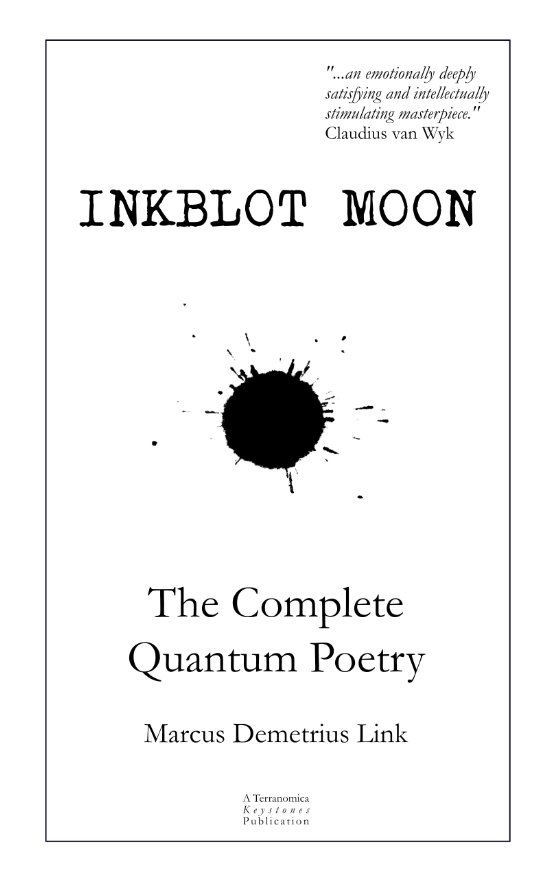
Inkblot Moon: The Complete Quantum Poetry is available from Keystone Publications (signed hardback) and Amazon (hardback, paperback, & eBook).
“…an emotionally deeply satisfying and intellectually stimulating masterpiece.”
Claudius van Wyk,
holistic thinker and
founder of the
Holos Earth Project
“A masterful poetic testament to the vision that human beings can yet become a beneficial keystone”
Inkblot Moon: The Complete Quantum Poetry brings together the four parts of my Quantum Poetry series together in one book. In that way, Inkblot Moon is both the end of that part of my becoming and a map of my becoming so far. It traces the long arc of a life lived on the edge—between the inner and outer, between myth and moment, between wound and wonder.
These poems are not just written; they write me, the poet, into being. They are the breath between stories, where the old self falls away and something not-new but timeless and more-whole begins to speak. It is not a performance. It is an offering.
At the heart of the book is ‘the jolt’—that exquisitely terrifying rupture in ordinary consciousness when an image, a phrase, a forest, or a piece of music tears open the veil. It is a kind of lightning strike that doesn’t burn but roots you deeper. A knowing without language. A recognition without reference. A crack in the structure where something ancient and unborn makes itself felt.
“Somehow, through these narrative, poetic, visual and/or musical portals, there is the possibility of leaping into the inside of the world where things are connected.”
(Epilogue: This Exquisitely Terrifying Jolt, p. 131)
From this place of rupture and reconnection, the voice emerges—a voice that knows suffering as the price of aliveness:
“I have been hurting since
because I am alive.
I must hurt
because I live.
It is one
and the same.”
(Wyrd Awakening – Part IV: This One Outer Keystone, p. 41)
Yet the path is not a striving, but a surrender:
“I am a river and a river
flows through me.
It’s not that I am lazy.
I just despise all effort
beyond being
what I already am,
my true nature.”
(By the Grace of My True Yearning…, p. 100)
And through this surrender, something is given forward—a tiny seed of tomorrow:
“Like this inkblot on my page
contains all the patterns of the world,
this journeywork of moonlight
transforms me and my joy
and my sorrow
into a tiny seed
of another tomorrow.”
(The Sacred Oath of the Quantum Poet, p. 45)
“I’m being walked by my path.
Like Walt Whitman’s blade of grass
I am traced into existence
by the pilgrimage of stars.”
(The Sacred Oath of the Quantum Poet, p. 54)
Inkblot Moon is not so much a collection of poetry but the wake left by a soul turning to face itself—and finding the cosmos looking back.
Available from:
